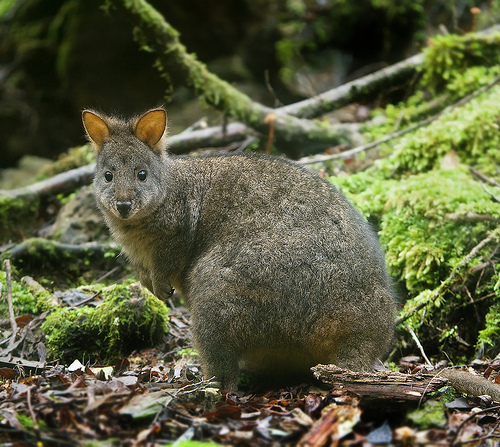Have you ever heard of a pademelon?
- Pademelons are nocturnal marsupials that generally live in bushland habitats in coastal areas, and are native to Australia and some nearby islands, including Papua New Guinea.
- The scientific name of a pademelon is Thylogale, and it is from the family Macropodidae, the family of kangaroos and wallabies.
- Pademelons are very similar to their cousins, the kangaroo and wallaby, although they are of a smaller size, and have a comparatively larger diameter tail, that also has a shorter length.
- Pademelons generally make their home in thick bush, jungle, forests and scrubby habitats, as well as swampy areas, and they usually spend their time alone.
- There are seven species of pademelon, and the colour of their fur is usually a combination of brown, red, black and grey.
Pademelon
Image courtesy of JJ Harrison/Flickr
- Pademelons have a life span of four to eight years, and historically they were hunted by early settlers and indigenous Australians, for both meat and fur.
- The height of pademelons typically range from 42 to 52 centimetres (16.5 to 20.5 inches) and they weigh 3.5 to 12 kilograms (7.7 to 26 pounds).
- The diet of pademelons consists primarily of vegetation such as grass, leaves, berries and shoots, and they are preyed on by foxes and dogs.
- A female pademelon has a pouch that holds its baby once born, and the baby, called a ‘joey’, only leaves the pouch after six months of age.
- While three species of pademelons are listed as ‘least concern’, four of the species, located in Papua New Guinea, are listed as vulnerable or endangered, and numbers have been declining, mostly due to hunting for food purposes and loss of habitat.
Bibliography:
Pademelon, 2013, A-Z Animals, http://a-z-animals.com/animals/pademelon/
Pademelon, 2015, Wikipedia, http://en.wikipedia.org/wiki/Pademelon






